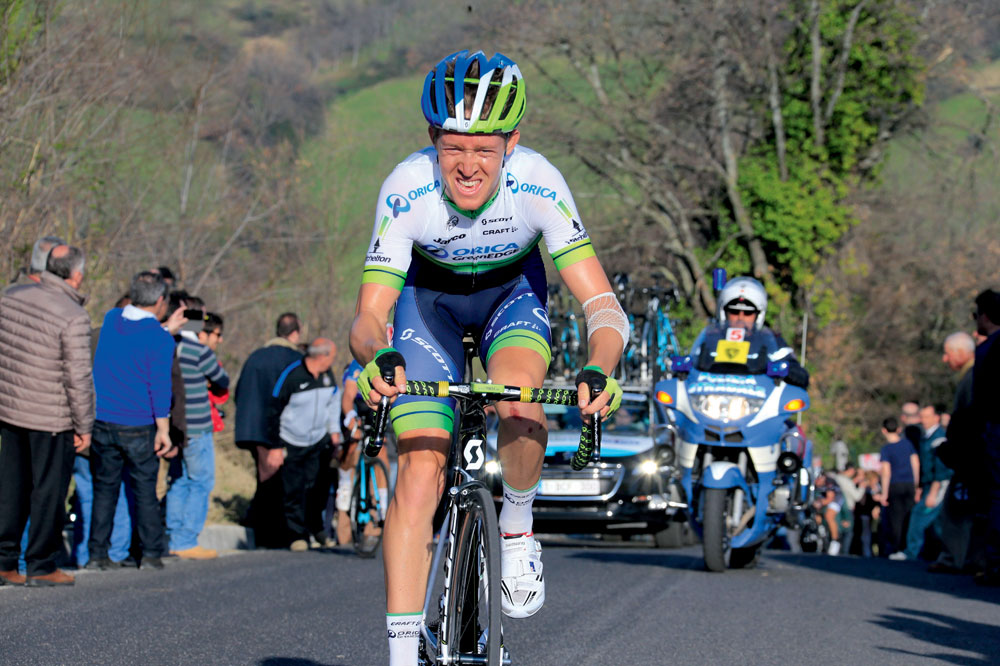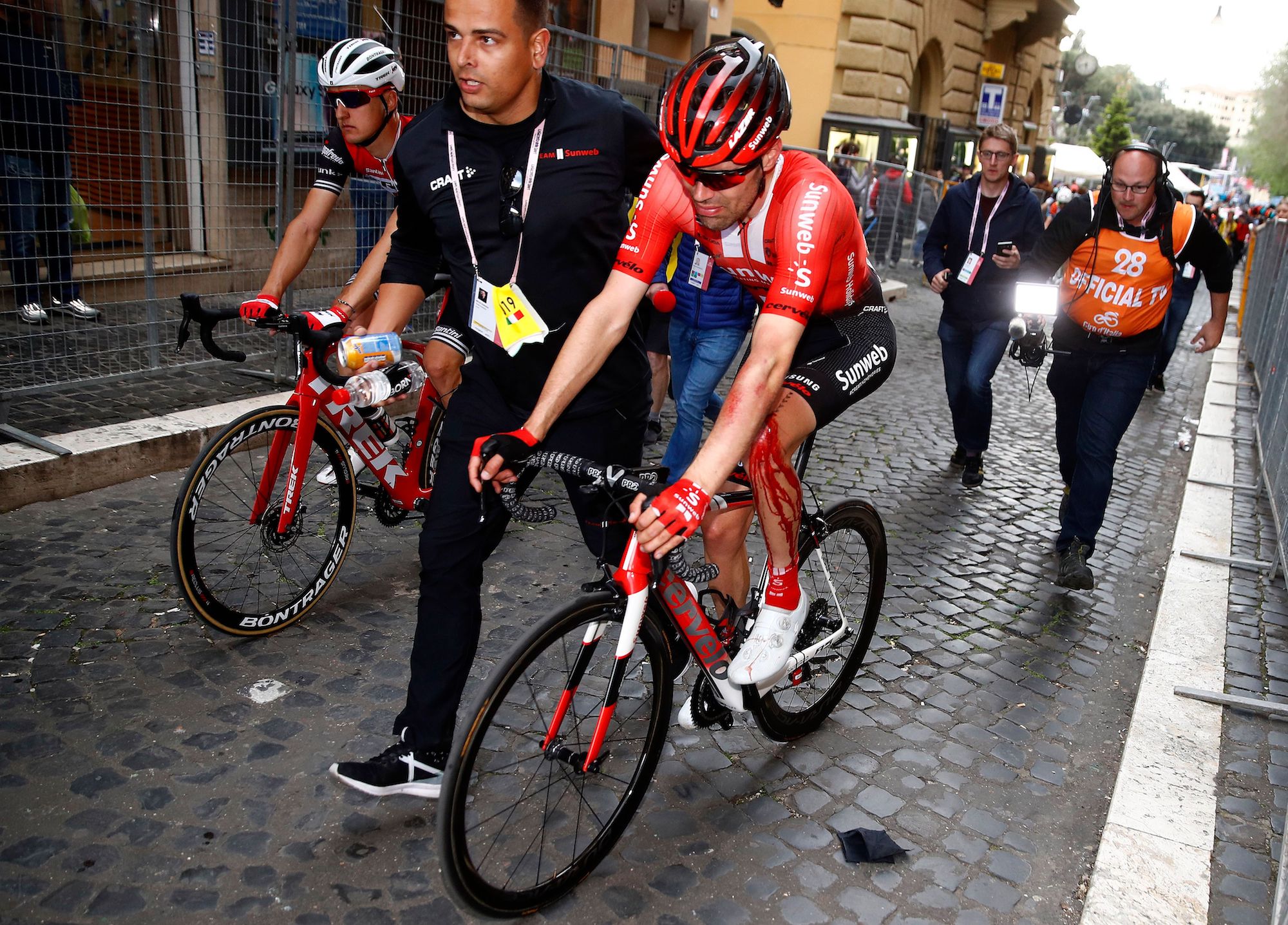The science of suffering
As a cyclist, do you have to suffer more than your rivals to win? And how ‘tough’ are bike riders compared to the average man or woman? Louise Mahé searches for the answers


Cyclists are known for being made of tough stuff. Riders endure burning legs and searing lungs on a regular basis. Pro rider Jens Voigt famously coined the phrase “shut up legs”, which is a good insight into a rider’s mind as they continue to push through the pain barrier.
Despite leg muscles burning with lactic acid build-up, cyclists constantly carry on. Many believe it’s the rider that is willing to suffer more than everyone else who is the eventual winner of the most epic and challenging races.
However, not only the winners suffer in cycling. Riders plough on and put themselves through pain just to meet time cuts and finish stages. Sprinters suffer when the Tour de France hits the mountains, despite the fact most of them climb slower than others; they just aim to make it through to the final fast finish stage.
Going into the red and pressing on when your body is screaming at you to stop is just part of riding, whether you are tackling a hill in a sportive or trying to keep up with the bunch in a race.
So, what singles out athletes and makes them able to suffer? Are they born with the ability to ride through the pain or are they trained to deal with it?
Performing with pain
Much research has gone into the science behind the suffering of athletes, from comparisons with the average person to seeing how blocking pain affects performance.
The latest race content, interviews, features, reviews and expert buying guides, direct to your inbox!
Often we see riders’ faces contorted, mouths gasping as they plough on in pain in time trials, during solo breaks and up huge mountains. Surely if this pain could be turned off, or blocked, it would mean riders could perform better and ride faster?
Interestingly, one experiment found that when the drug fentanyl was injected into cyclists’ spines to completely block any pain in their lower body, they didn’t actually perform better. The study, conducted by the University of Wisconsin, compared the results of a five-kilometre time trial when riders took fentanyl and a placebo. When injected with fentanyl, riders started the time trial significantly faster than when on the placebo.
However, the riders then ran out of steam after the halfway point and rode the second part of the time trial a lot slower than those that were on the placebo.
This research indicates that pain is needed when riding in order to judge an effort properly. The head of the Pain Genetics Lab at McGill University, Dr Jeffrey Mogil explains: “Pain is more than one thing. It’s a sensation, like vision or touch; it’s an emotion, like anger or sadness; and it’s also a ‘drive state’ that compels action, like hunger.”
It seems pain of some description is actually good for cyclists, and experiencing pain helps drive us on. But how much is needed for this feedback system?
While the experiment by the University of Wisconsin blocked lower body pain entirely, other experiments have looked at performance when pain levels were reduced, through taking painkillers. Dr Alexis Mauger, from the University of Kent, used the painkiller acetaminophen to reduce the pain cyclists felt during a 16-kilometre time trial. The results of this were then compared to cyclists’ performance when a placebo was taken.
When riders took the acetaminophen, they completed the time trial significantly faster and were able to sustain higher power outputs than when on the placebo. They also had a higher average heart rate and blood lactate levels during the time trial.

Despite having these higher physiological outputs when taking acetaminophen, riders perceived the pain levels to be the same as when taking the placebo.
Participants managed to ride significantly faster when taking the painkiller as they still only felt the same level of pain as when producing lower outputs on the placebo. This suggests the pace you can maintain isn’t determined by a physiological limit, like accumulation of lactic acid. It seems it’s actually the pain level you’re able to endure that determines the pace you can maintain, and when this is reduced, performance improves.
Mauger has recently worked on another experiment, published in January 2014, where similar results were seen. Nine active males performed two sets of eight 30-second sprint efforts, once when on the painkiller acetaminophen and once on a placebo. Results showed that the participants had significantly higher average power outputs when taking the acetaminophen than the placebo during the eight sprint efforts. These results back up the theory that exercise may be regulated by pain perception. Increasing pain tolerance can improve exercise performance.
The University of Wisconsin research shows that pain feedback is needed. The feedback from aching muscles ensures you reach the limit of tolerability right when you finish, and not beforehand, so you get the most out of your effort. The nerve signals from sore legs are what tells the body to change breathing and circulation rates, so more oxygen is delivered to the tired working muscles.
Train for pain
Moderating pain can help performance, but what is it that enables athletes to continue riding through that pain barrier, even if it is higher, when many would just give up? Previous research has indicated that up to 50 per cent of sensitivity towards pain is influenced by genetics, but recent research shows that this may instead be ‘trainable’.
Researchers at King’s College, London have found that genetically identical twins experienced differing pain thresholds. This shows pain tolerance could be changeable through lifestyle factors, such as training, as the only way there could be a difference in pain tolerance seen between the genetically identical twins is through environmental factors.
These findings reinforce the idea that athletes are able to tolerate pain better than the general population — not because they are inherently tougher, but because they have trained themselves to. It’s thought that athletes and regular people have the same pain threshold, so they feel the pain at the same time — it just seems athletes are able to put up with it for longer and at higher levels.

In 2013 a study was published on how ultra-endurance runners, competing in the TransEurope Footrace where participants cover 4,487km in 64 days without rest, reacted to plunging their hands in ice water. The participants, a mix of runners and non-athletes, were asked to dunk their hands into ice cold water for three minutes and rate the pain out of 10.
The study, conducted by Dr Wolfgang Freund of Ulm University in Germany, found that non-athletes were, on average, only able to hold their hand in the ice water for 96 seconds, with their pain threshold maxing out at 10. Only three non-athletes were able to keep their hand in the ice water for the full three minutes. The ultra-endurance runners all managed the full three minutes and only rated the pain as a six out of 10.
As previously suggested, this ability to seemingly endure pain better than an average person is thought to come from training. As physiological fitness improves so does a rider’s ability to handle ‘pain’. The brain becomes the thing that says when to stop, often before your body does. Knowing your limits like this also helps when pressing on.
Going too far into the red can often mean there’s no coming back and means ending an effort earlier than planned. With cyclists constantly needing to push themselves during training sessions or to hold a wheel when the pace is high, it’s no wonder they are known for being able to suffer.
This ability to deal with pain like this not only makes races like the Tour de France possible, but it also explains why riders can continue on even when they are badly injured.
Broken bones
It’s not just the natural physiological response to exercise that makes bike riders a tough bunch — we often see pro riders continue to race despite crashing badly. Even after hitting the deck, and ending up with broken bones or severe skin loss, many pros keep riding and racing. Again here they endure pain, but this time it’s a very different kind to the tolerance of lactic acid.

It seems athletes are able to withstand different kinds of pain, not just the leg-burning variety. Even when they’re not aiming to win, riders will put themselves through extraordinary amounts of suffering just to finish a race or help a team-mate.
Struggling on in harsh conditions and with injuries is stuff of cycling legend. In the 1980 Liège-Bastogne-Liège, Bernard Hinault battled through heavy snow, despite the majority of riders abandoning, to finish nearly 10 minutes ahead of his rivals. However, as he grimaced through the biting cold, he finished with two severely frostbitten fingers, which are still numb today.
In 2013 we watched Geraint Thomas continue to ride the Tour de France after fracturing his pelvis early on in the three-week stage race. Although allowed to take regular painkillers, like ibuprofen and paracetamol, he was regularly being lifted off his bike at the end of the stages.
Initially, Thomas was told nothing was wrong, so he thought he had to ‘man up’ and crack on. However, as Thomas explains: “The next day was the worst day I’ve ever had on the bike. Just pain. The team realised something wasn’t quite right, so I ended up on the CT scan in hospital. That’s when the fracture came up, and I was really down then.
“I thought that was it. But the guys in the hospital said it definitely wasn’t going to get worse from riding; it was just whether I could put up with the pain. That was encouraging. I definitely didn’t want to stop.”
This mentality is evident in Dr Freund’s iced-water research. Familiarity with suffering possibly explains how pro riders can continue on, despite severe injuries from crashes.
Learn to tolerate
It seems there is nothing superhuman about cyclists; bike riders are just as sensitive to pain but have conditioned themselves to tolerate it. It seems riders often thrive on pain and use it to spur themselves on.
The ability to tolerate pain may explain why riders ride through injuries — they are used to dealing with pain and can transfer this ability to ride on despite other types of suffering. Pain is manageable, not just by drugs but by training the body and mind to cope with the discomfort of riding at a high intensity.
Getting used to mentally and physically going through the pain barrier is something all athletes must do if they want to be the best. Research backs up the idea that those willing to suffer most are usually the eventual winners. However, cycling seems to be one sport were virtually every rider suffers, but unfortunately they don’t necessarily all win.
Michelle Arthurs-Brennan the Editor of Cycling Weekly website. An NCTJ qualified traditional journalist by trade, Michelle began her career working for local newspapers. She's worked within the cycling industry since 2012, and joined the Cycling Weekly team in 2017, having previously been Editor at Total Women's Cycling. Prior to welcoming her first daughter in 2022, Michelle raced on the road, track, and in time trials, and still rides as much as she can - albeit a fair proportion indoors, for now.
Michelle is on maternity leave from April 2025 until spring 2026.
